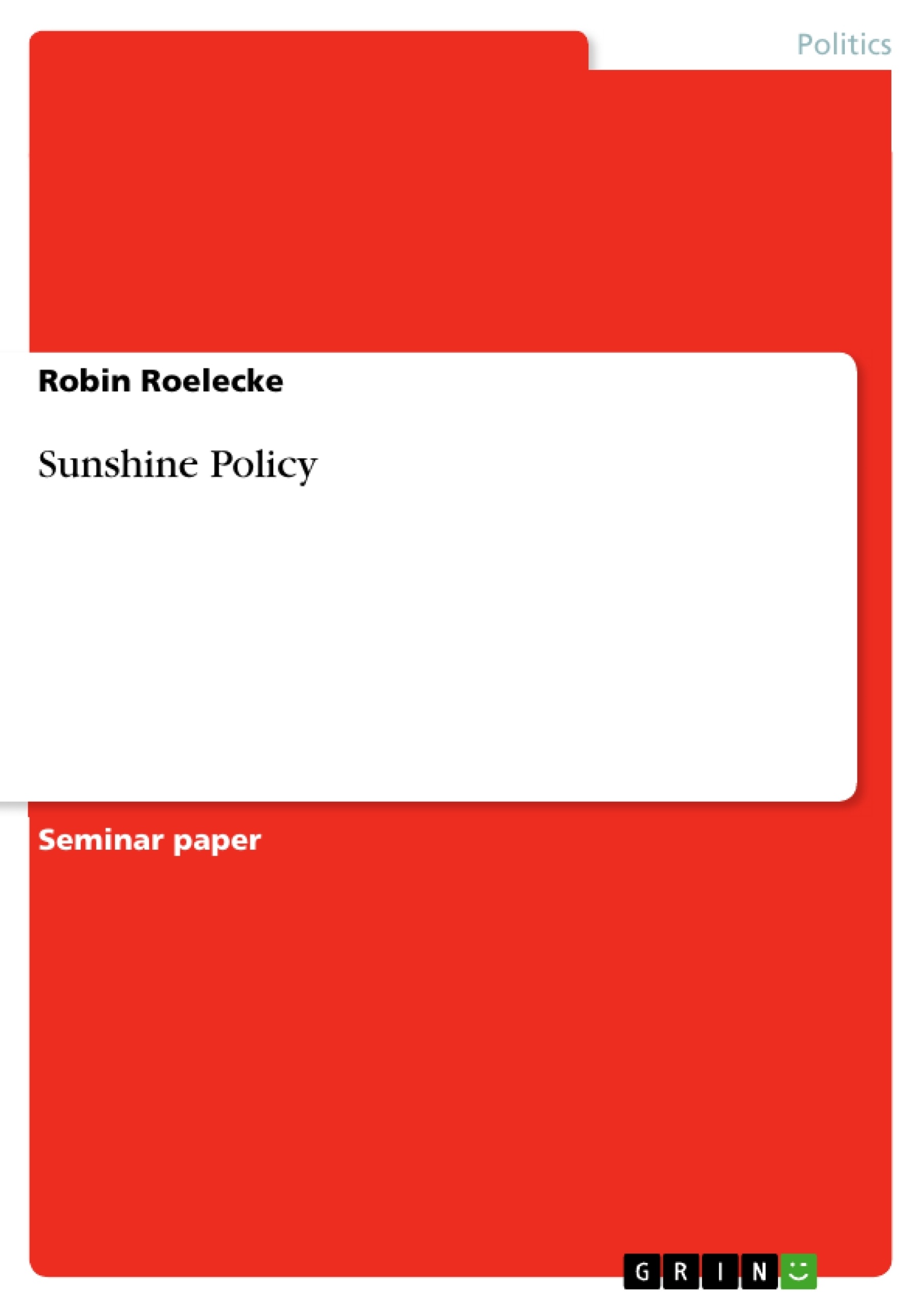This paper shows the achievements of the Sunshine Policy with the help of the official statistics from the website of the Ministry of Unification, South Korea. Therefore the paper presents major statistics of inter-Korean relations, like inter-Korean talks, tourism, humanitarian aid and private exchange. The paper will compare the numbers of the Sunshine Policy (therefore between 1998 and 2008) and the numbers before (was not always possible) and the numbers after the Sunshine Policy.
Inhaltsverzeichnis (Table of Contents)
- Introduction
- South Koreas foreign policy to North Korea since 1998
- The Sunshine Policy
- June 15 Joint Declaration (2000) & October 4 Declaration (2007)
- Lee Myung-bak foreign policy
- Major Statistics of the time around the Sunshine Policy
- Inter-Korean Dialogue
- Economic trade and cooperation
- Exchanges in the private sector and humanitarian aid
- Criticism of the Sunshine Policy
- Conclusion
- Resources
Zielsetzung und Themenschwerpunkte (Objectives and Key Themes)
This paper analyzes the achievements of the Sunshine Policy, a foreign policy towards North Korea implemented by South Korea from 1998 to 2008. The main objective is to demonstrate the success of the Sunshine Policy by examining statistical data from the Ministry of Unification, South Korea, and comparing it to the outcomes of earlier and later periods. The paper focuses on inter-Korean relations, including dialogue, trade, tourism, humanitarian aid, and private exchanges. Key themes explored include:- The objectives and principles of the Sunshine Policy
- The significance of the June 15 Joint Declaration and October 4 Declaration
- The statistical impact of the Sunshine Policy on inter-Korean relations
- The contrast between the Sunshine Policy and the foreign policy of the Lee Myung-bak government
- Reasons for the shift in foreign policy towards North Korea
Zusammenfassung der Kapitel (Chapter Summaries)
The introduction explains the context of the Sunshine Policy, highlighting its significance in reducing tension between South Korea and North Korea. It also outlines the paper's methodology and aims, focusing on the use of statistical data from the Ministry of Unification to illustrate the achievements of the Sunshine Policy. Chapter 4 provides a detailed overview of South Korea's foreign policy towards North Korea since 1998, with a particular emphasis on the Sunshine Policy. This chapter details the three core principles of the Sunshine Policy, including the objective of peaceful coexistence and cooperation between the two Koreas. It also explores the concept of “flexible dualism,” which emphasizes the separation of politics and economics in inter-Korean relations. Chapter 4.2 provides a brief summary of the June 15 Joint Declaration (2000) and October 4 Declaration (2007), two key agreements reached during the Sunshine Policy period. These declarations represent significant steps toward reconciliation and cooperation between the two Koreas, setting out a framework for future relations. Chapter 5 explores the major statistics of the period surrounding the Sunshine Policy, focusing on inter-Korean dialogue, economic trade and cooperation, and exchanges in the private sector and humanitarian aid. The chapter compares these statistics to periods before and after the Sunshine Policy, illustrating the notable differences in outcomes under each foreign policy approach. Chapter 6 delves into criticisms of the Sunshine Policy, highlighting the reasons why it was not continued. It explores the complex political landscape surrounding inter-Korean relations and provides insight into the factors that led to the shift in policy towards North Korea.Schlüsselwörter (Keywords)
This paper focuses on the themes of inter-Korean relations, the Sunshine Policy, North Korea, South Korea, political engagement, economic cooperation, humanitarian aid, and reconciliation. It explores the impact of the Sunshine Policy on inter-Korean relations, analyzing statistical data to illustrate the differences in outcomes before, during, and after its implementation. The paper also discusses the political context surrounding the Sunshine Policy, including the reasons for its termination and the implications of the shift in foreign policy towards North Korea.
Final del extracto de 15 páginas
- subir
- Citar trabajo
- Robin Roelecke (Autor), 2013, Sunshine Policy, Múnich, GRIN Verlag, https://www.grin.com/document/265394
Leer eBook



